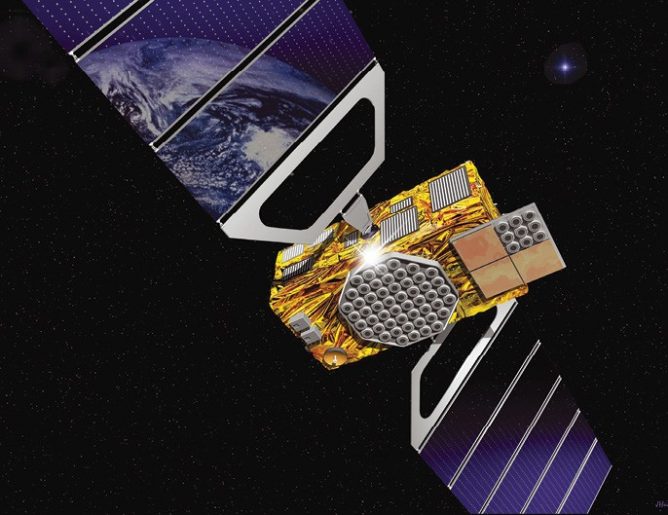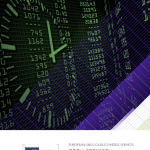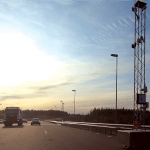July 2019 was a difficult month for the Galileo program. A system-wide technical failure that took a week to resolve was compounded by a communications breakdown that dismayed its supporters. For the European Commission, the road back will be difficult, but it is a road worth traveling.
Every GNSS has experienced a failure. On January 26, 2016, an error in the GPS data upload system caused incorrect data to be transmitted from the satellites on the L1 band used by most commercial GPS receivers. The problem was resolved within six hours, although some users experienced problems for as much as twelve hours. The next day, the US Air Force (USAF) released a full statement explaining that the problem was caused by ground system software when one satellite was decommissioned.
Russia’s GLONASS and the Chinese BeiDou system have also experienced technical glitches, of greater or lesser severity.  But what happened to Galileo in July 2019 was unprecedented. By the European Commission’s own account, the total system failure lasted from 10–17 July. During that time, according to the European GNSS Agency (GSA), “A team composed of GSA experts, industry, ESA and Commission, worked together 24/7 to address the incident.”
But what happened to Galileo in July 2019 was unprecedented. By the European Commission’s own account, the total system failure lasted from 10–17 July. During that time, according to the European GNSS Agency (GSA), “A team composed of GSA experts, industry, ESA and Commission, worked together 24/7 to address the incident.”
According to a European Commission spokesperson, “The technical issue was solely related to the ground infrastructure in a Galileo control centre, not to the Galileo satellites. The incident took place during an important upgrade of the control centres, when the standard redundancy between the centres was not available. The incident impacted the time and orbit determination function and prevented the correct generation of navigation messages.”
That it took all of a week to resolve the problem is surprising, but equally troubling was the lack of communication that accompanied the outage. The official Notice Advisories (NAGUs) posted on the European GNSS Service Centre website were slow to appear and provided little detail. Meanwhile, no voice was heard, no face was seen, no representative of the program was available for an official comment.
Eventually, some days into the event, the GSA did post a statement on its website, taking responsibility and even apologizing for the failure. But then it attempted to minimize its import by arguing that, after all, Galileo is still in its “initial services” phase and therefore should not be expected to work without interruption. Among many Galileo’s supporters, that message fell flat.
Users of smartphones may or may not have noticed the Galileo outage at all, but the design engineers, systems integrators, application entrepreneurs and service providers that had invested heavily in Galileo did certainly notice, and were severely discouraged.
Duty to Report
During that week when Galileo was offline, Inside GNSS received many messages and questions from its readers and correspondents. The messages were informative and important. They revealed concern, disappointment, even fear. Inside GNSS received these messages not because it represents the Galileo program in any way, but because, for many who were surprised by how the Galileo failure was playing out, Inside GNSS was apparently the only responsive ear to which their messages could be delivered.
We believe the comments of these correspondents may be useful to the Galileo program.
One GNSS industry executive wrote: “It’s inexcusable how long it took after the failure occurred until the user base was informed. Even worse the SIS/health flag showed no problems until the very end. I was surprised. A total constellation failure should not be happening in the modern world of testing and simulation. The reaction was slow and until this day has been very secretive and political. As there has been no official communication, all my theories [concerning the technical cause of the failure] are derived from Inside GNSS!”
In the absence of proactive and timely messaging from the Galileo program to service providers who market products in part based on their Galileo features, these providers were effectively left “holding the bag.”
A European commentator expressed concern while watching and waiting for information: “The handling of the situation was a failure in itself; the first NAGU published 14 hours after the event, no information about the cause and no indication about the time to recovery, followed by a second one with more or less the same approach.
“Galileo is strategic for Europe, it has managed to get close to completion, but the organization and its mindset need to change radically. They have not yet fully understood what providing a critical service means.”
Further Reaction
After the technical crash was resolved, the comments became more circumspect. A representative from the automobile industry told us, “The Galileo outage raises a key operational concern for vehicle manufacturers. While Galileo satellites were evidently healthy between July 11–18, it took the GSA control segment six days to identify the root cause and fix the outage. This clearly shows a weakness in ground operations that has implications to worldwide users. I would like to see a statement from the GSA about how they intend to safeguard against similar outages in the future.”
A North American GNSS engineer wrote, “I look forward to Galileo becoming fully operational—these are very useful signals! This was likely a good learning experience, but learning experiences are rarely pleasant. I’m looking forward to the constellation status update at ION GNSS+ in September.”
Finally, an academic involved in development of one of the major non-US, non-European GNSS programs told us, “In my opinion, in space engineering, due to a large number of links, brief failure is inevitable, such as satellite state abnormal in a short period of time. However, I wonder why Galileo system had been down for so long this time. I guess this failure has exposed more than technical problems, there should also be management problems.”
Answers?
As a result of the July episode, the Galileo program now has a major branding problem on its hands. It needs to explain what went wrong and how it will move forward.
The unprecedented technical failure and the protracted search for a fix to the underlying technical issue will be challenging to explain.The subsequent communication lapse exposed what is perhaps the program’s greatest weakness: inadequate governance arrangements.
The program rests on three pillars. One pillar is ESA, one of the premier organizations of any kind in the world. It has carried out countless space missions of the highest order, flawlessly. Another pillar is the GSA, comprising a group of carefully selected and world-leading experts in the field of GNSS, including contingency planners and rapid-response teams, capable of delivering at least near-military-level reliability.
Under the current Galileo governance structure, neither of these organizations is able to speak on its own initiative concerning the Galileo failure. This is why we have been unable to relay to you any words on the subject from any person within these two organizations. This is in turn because, under the Galileo governance structure, both entities are subservient to the third pillar, the European Commission. Under the circumstances surrounding the July 2019 incident, ESA and the GSA could only repeat the Commission’s own prepared words. Only the Commission could inform us. Unfortunately, the European Commission was probably the least suited of the three to respond to the need for direct, frank and open communication. And apparently it still is.
A few days ago we sent some questions to the relevant European Commission spokesperson, the only person officially allowed to communicate with the press on this matter. The description that we received of the technical root cause, cited above, months after the failure, remains vague.
More surprisingly, the Commission continues to use the “it’s-only-the-initial-phase” excuse to minimize the significance of the event. The official response reads, “The interruption of services was indeed unfortunate. But it is important to bear in mind that Galileo is, since December 2016, in its ‘Initial Services’ phase…It is not uncommon for a complex global navigation system in its ‘initial services’ phase, to experience temporary issues affecting the quality of the signal.”
What’s surprising about this response is that key Galileo operatives within the Commission are aware that the “initial-phase” explanation was roundly rejected by the GNSS community when it was first offered, months ago.
The spokesperson’s service continued to vaunt the program’s communications response, in the form of the NAGUs issued on the European GNSS Service Centre website. The GNSS community, by and large, found those NAGUs inadequate.
These official responses, crafted to deflect criticism while revealing little new information, do not seem to be in touch with the GNSS community. They do not sound like any of the familiar “voices of Galileo” who know us and whom we recognize and respect.
Who Speaks for Galileo?
Galileo is managed within the European Commission as part of the EC Directorate General (DG) for Internal Market, Industry, Entrepreneurship and SMEs, also known as DG GROW. As its name implies, this DG manages much more than just the EU’s space programs. It also oversees initiatives related to EU competitiveness, financing for small businesses, European chemicals regulation, CE marking, etc., and it contributes to a variety of other initiatives related to the European single market.
All the activities carried out by DG GROW are under the responsibility of the politically appointed EU Commissioner for Internal Market, Industry, Entrepreneurship and SMEs, and of that commissioner’s hand-picked cabinet. The Commissioner, who is not necessarily a GNSS expert, indeed who is not necessarily an expert in any of the fields covered within the DG that he/she oversees, serves for five years and then is replaced by a new Commissioner.
There are many well-known and trusted operatives within the Galileo program, both at the Commission and at the GSA, who are perfectly capable and who were, we know, willing and eager to address the system failure openly and in real time when their intervention could have made a difference.
But their hands were tied. The clearance they need to speak about anything as sensitive as the Galileo failure can come only from “cabinet level,” that is, from the team that immediately surrounds the responsible Commissioner. The Galileo program was ready to respond but it was held back by operatives who were possibly concerned more about politics than serving the Galileo user community.
One of the reasons details about the failure were and continue to be kept under wraps is that once the nature of the technical failure is divulged, the identities of the contracted partners responsible for the failure are likely to be deduced. That might prove embarrassing to those contracted partners. If, on the other hand, responsibility for the failure were to be incorrectly attributed to such a partner, they might be justified in seeking retribution for injuries sustained to their reputations. While these are probably real and valid concerns, they are also clearly political concerns.
Many now recognize that, under certain circumstances, such as those that occurred during the July 2019 failure, the Galileo program might be better served if the people who run the program were allowed to do their work without this kind of restriction.
Not as Bad as All that
The European Commission is a powerful tool for achieving real progress of a steady, dependable and valuable nature. It is a fundamental EU institution with crucial roles to play. Establishing overall policy goals, gathering political support, obtaining financing and applying that financing to the pursuit of world-class research and many crucial policy initiatives are only some examples.
However, due to its particular management arrangements, specifically as they concern the Galileo program, it was unable to respond effectively and quickly to the July 2019 crash.
That’s the bad news. Here’s the good news: Galileo will change. The changes need not be drastic. It might be enough for the European Commission to allow its own Galileo unit to operate with a little more autonomy under certain extenuating circumstances. Just let them do their jobs. We leave that to the Commission to decide.
Future Perspectives
“If nothing else,” someone suggested, “Galileo has been a fantastic experiment and will serve as a model of international cooperation for future generations.”
Unlike GPS, GLONASS and BeiDou, which are largely single-nation programs, Galileo has required the coming together of 28 very different countries. The variety of thought, culture and tradition among European countries makes that a challenge. It’s a challenge faced every day by the European Union, and with gusto.
“Whatever happens, Galileo will be held up as an example of how to work together, and in some cases how not to work together,” another source commented. “In that sense at least it already has enormous value. The new challenges facing today’s world are, after all, global and require a level of cooperation that has been uncommon up to this point. Just look at terrorism, the migration crisis and environmental protection, climate change. We have seen the difficulties that these challenges involve in terms of international cooperation.”
Is Galileo then just a case study? An example? If so then right now it needs to be an example of how to learn from one’s mistakes. It must now be an example of agility, flexibility, and perhaps even humility, in the face of failure.
The Galileo system was famously promoted from its inception as a non-military system. But other GNSS programs demonstrate that there are some things military organizations can do quite well. Indeed, there may be some tasks that require a more military mindset, such as the delivery of a critical day-to-day global utility.
Last January, EC Commissioner Bienkowska famously said, “We need to promote a new European approach. We need our own European vision, not look to others.” After a burst of applause from her European audience, she continued, “For example in the US, they have a national space council, attached directly to the President. Why couldn’t we have a European Space Council attached directly to the European Council or to its president?”
Bienkowska was right on both counts. Europe can move forward and succeed as Europe, learning from its mistakes, adapting and evolving. It can and should continue to look to its international partners, to seek examples abroad of how GNSS can work. In 1777, the young Marquis de Lafayette said to General George Washington, “It is not to teach but to learn that I come hither.”
We now understand that the Galileo program has invited certain key representatives of the GNSS industry, among others, to a “Galileo post mortem,” to take place on September 9. We expect that some listening and learning will occur at that event. We hope the proceedings will be made available in real time to the widest possible public. As yet, we know of no representatives of the press who have been invited.
This could become a great defining—or redefining—moment for Galileo, as it moves into a new phase. We all eagerly await Galileo’s next moves and next words.






